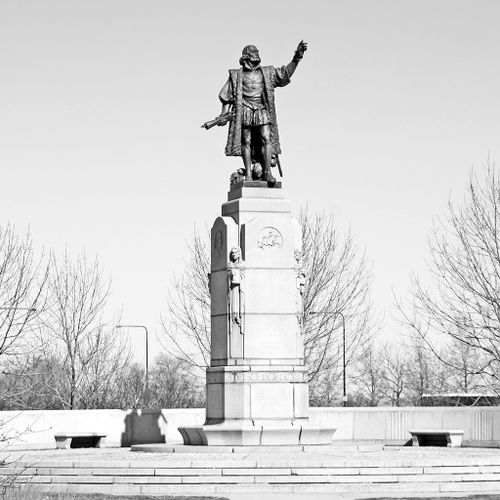Columbus Monument

Title
Columbus Monument
Date
1933
Artist
Carlo Brioschi (1871-1941)
Location
Storage
Context
Forty years after Chicago held the World’s Columbian Exposition international world’s fair in 1893, the city opened a new world’s fair in 1933 under the name A Century of Progress – honoring the 100th anniversary of the city’s official incorporation as a town. Since Christopher Columbus was a primary themed focus for the 1893 fair, the Italian American community sought to make Columbus a prominent presence at the Century of Progress. A site was provided in Grant Park not far from the lakefront Fairgrounds south of Roosevelt Road. The sculptor chosen for the project was Milan-born Carlo Brioschi (1879-1941) who immigrated to the United States in 1899, where he established a studio for sculpture and architectural carving in the Minneapolis-St. Paul area. Brioschi had earlier created a similar sculpture for the grounds of the Minnesota State Capitol – toppled and seriously damaged in April 2020. Chicago’s Columbus sculpture was planned for a public unveiling as part of “Italian Day” festivities at the Century of Progress on August 3, 1933. The public unveiling attracted over 25,000 spectators, and included among its many speeches was a recited message to Chicago from Italy’s leader Benito Mussolini. In actuality, the sculpture had two unveilings. An earlier unveiling on July 17 was part of festivities to greet Italian aviator General Italo Balbo, who led a squadron of twenty-seven seaplanes from Rome to Chicago in honor of the Century of Progress exposition. Balbo was warmly welcomed by Chicago and its Italian-American community, even though he espoused deep Fascist political beliefs. He was greeted by Mayor Edward Kelly at City Hall, and later traveled to Washington D.C. to have lunch at the White House with President Franklin Delano Roosevelt.